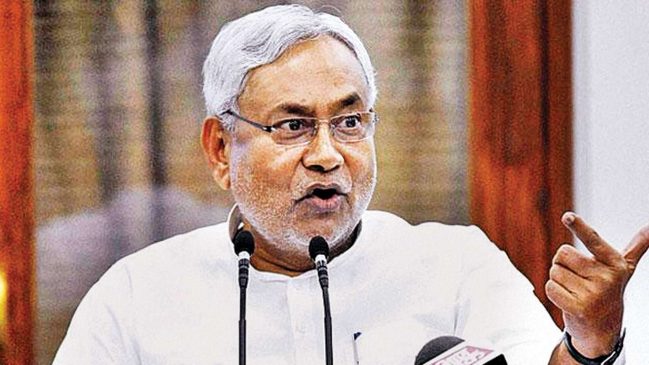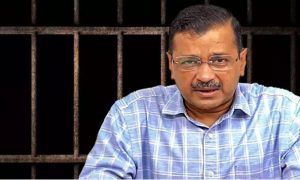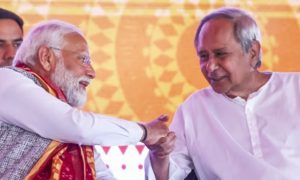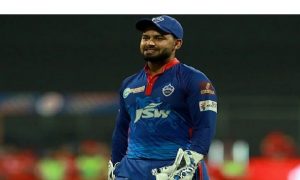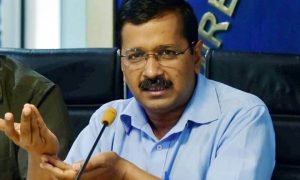Since 2005, barring the 2014 Lok Sabha polls, the winning party or coalition in each assembly and general election has had Nitish Kumar by its side
As Sanjay Jaiswal, on April 15, walked into the Bihar chief minister’s residence to attend an iftar party thrown by Nitish Kumar, his entry was flagged—not only because he was late but also because the BJP state president seemed to have made an appearance at Nitish’s doorstep just a day before the Bochaha bypoll result. As many had guessed, Bochaha proved to be a shocker for the BJP, the single-largest party in the state assembly. Its candidate Baby Kumari suffered a defeat by a margin of over 36,500 votes to the Rashtriya Janata Dal (RJD).
Seen as an assertive advocate of the Yogi Adityanath model of governance—proponent of right wing politics and ‘bulldozer’ administration—Jaiswal had caused speculation by recently claiming that Nitish would remain the chief minister of Bihar till 2025. It was perceived as a signal from the BJP that the party might be thinking beyond its alliance with the Janata Dal (United) for the next state election.
Jaiswal’s assertion was rebuffed by JD(U) leaders. JD(U) parliamentary board chairperson Upendra Kushwaha even said there might not be any NDA in Bihar without Nitish as CM. What Kushwaha said indeed assumes significance. On April 22, as the Bihar chief minister walked to the nearby residence of Rabri Devi to attend the iftaar party he had been invited for, it once again underlined his importance in Bihar politics. Acceptable as a leader to both the BJP and the RJD, Nitish has a unique advantage. At a time when some BJP leaders keep on hinting about having a CM from their party in the future, Nitish’s visit to Rabri Devi’s house—which also set off intense speculation about a political realignment in Bihar—may silence them.
Jaiswal’s statement, followed by his arrival at Nitish’s residence, may not be a coincidence. It throws up some larger questions. How badly does the BJP need Nitish in Bihar? Why does the Bihar CM remain indispensable to the BJP? A section of BJP leaders may be in a hurry to see their party achieve electoral self-reliance in the state, but the road to such success is likely to be an extremely uphill climb without Nitish.
Political observers attribute the BJP’s haste in punching above its weight as well as getting Vikassheel Insaan Party (VIP) chief Mukesh Sahani dropped from the cabinet in the run-up to the bypoll as costly mistakes. “Fine, a section of BJP leaders may be looking beyond Nitish Kumar. This is natural for the single-largest party, but given Bihar’s political complexities, the party’s approach needs to be accommodative keeping the 2024 Lok Sabha polls in mind. Doing well in Bihar, which has 40 Lok Sabha seats, will be crucial,” says a state BJP leader.
Nitish has been the fulcrum of Bihar politics ever since his party defeated Lalu Prasad’s RJD in the 2005 assembly polls. Barring the 2014 Lok Sabha election—when Bihar, like the entire country, was swept by the Narendra Modi wave—the winner in each assembly and general election since 2005 has had Nitish by his side. “The JD(U) may have been relegated to third position in the Bihar assembly, behind the BJP and RJD, but it continues to form the third important axis in Bihar’s triangular politics. The JD(U) cannot be wished away,” concedes a senior BJP leader.
While he talks about pulling all sections of the electorate together, Nitish’s vote base is the numerically significant Extremely Backward Castes (EBCs) and Mahadalits (most marginalised among Scheduled Castes), who together account for 15 per cent of the voters. Caste-neutral women, whom the CM has won over with his pro-women reforms, such as 33 per cent reservation in government jobs, are largely by his side. These three sections make up over 45 per cent of the Bihar electorate. Nitish is believed to bag the largest chunk of his votes from these sections.
Since the 1990s, Bihar’s political landscape has remained dominated by Lalu, Nitish and the BJP. In fact, going by convention logic, if the NDA looks comfortable in Bihar, it is by the simple logic that when two of the three main parties join hands, they hand out a sure defeat to the third. The BJP has succeeded on its own only in the 2014 Lok Sabha polls, when Nitish and Lalu fought separately. When the two joined hands for the 2015 assembly polls, the BJP received a resounding drubbing.
This perhaps lies at the heart of the NDA’s logic that notwithstanding a section of ambitious saffron leaders, the party should stay engaged with Nitish because his social grouping, which accounts for over 40 per cent of voters, often determines the poll winner. It is too early to predict if the BJP would hold back its ambition of becoming bigger than what it already is in Bihar. However, perhaps after the Bochaha result, the saffron leaders will seek comfort in the company of Nitish Kumar more than before.

